Issue #134: 2023 is Over, Roast Some Sweet Potatoes
Another Year Down, Hopes and Happiness, Roasted Sweet Potato Wedges with Za'atar
Well, we made it to the end of 2023.
The same things that were a mess at the end of 2022—our political system, the war in Ukraine, COVID-19, gun violence, our healthcare system, climate change, the state of our infrastructure—are still a mess today. And to those we’ve added an unfathomably horrific terrorist attack on Israel by Hamas, the resulting war with an unconscionable number of Palestinian casualties, rising global antisemitism that’s become violent and scary, and the warmest Christmas on record in many parts of the world.
The only good news seems to be coming from the economic front. According to the data, the American economy is strong. Inflation and interest rates are both headed downward. But those data haven’t shifted the mood and people still feel like the price of groceries is crushing.
As one friend noted, “Who feels like celebrating?”
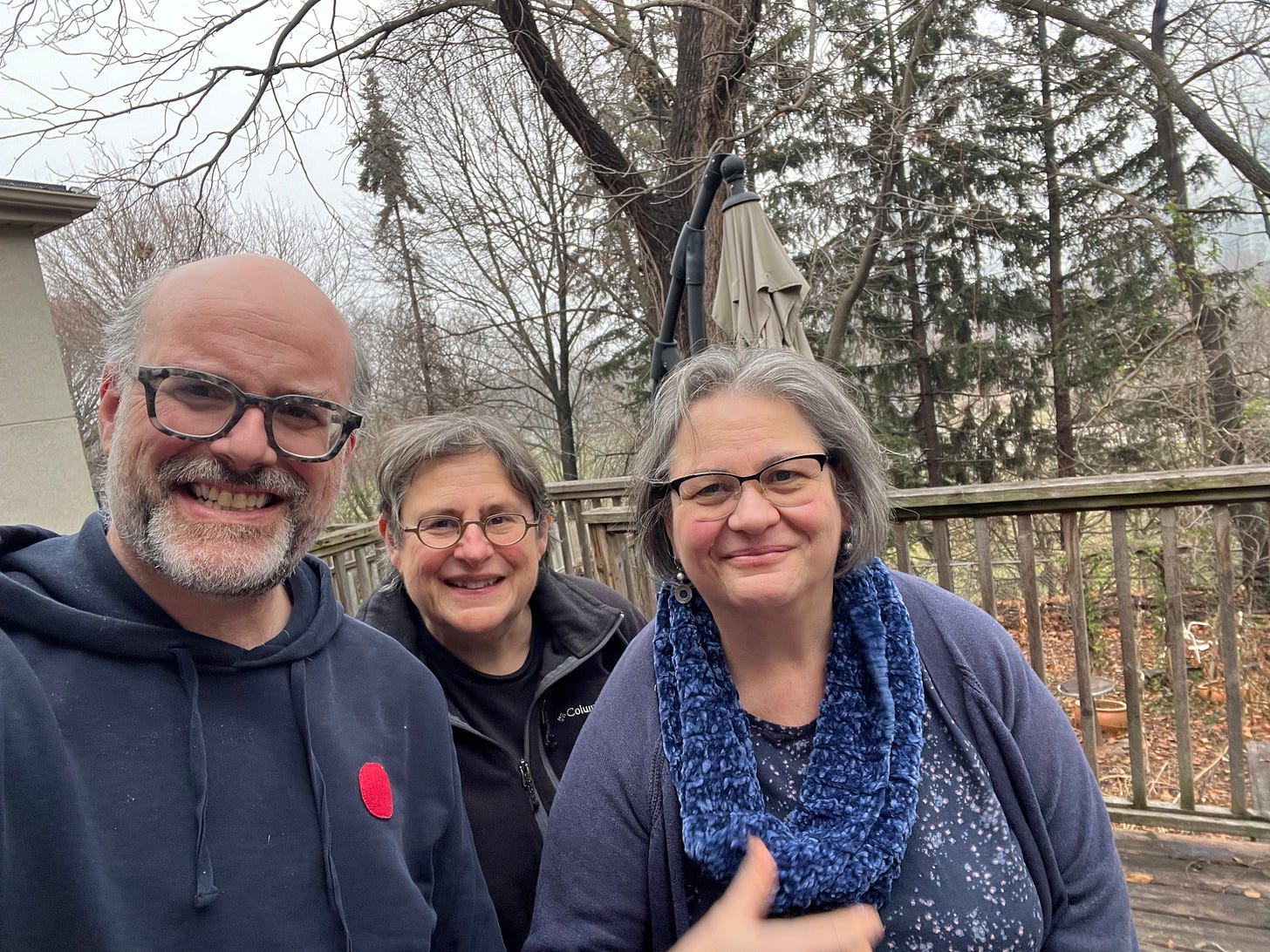
We’re in Toronto with my family, which is a nice, quiet place to be.
Today is Milo’s birthday. She turns four in human years. Milo doesn’t seem to care about the state of the world. Maybe that’s because we haven’t given her a cell phone or her own social media accounts. We could learn something from that. She just goes about her business sniffing telephone poles and door stoops and piles of leaves and everything. She gets excited to meet new people and other dogs on her walks. And she is willing to drop everything and change her focus if something unexpected happens, say, she sees a squirrel. There are a lot of squirrels in Toronto. And even some bunnies. What’s more, Milo is full of optimism that any minute she is going to get another tennis ball or a squeaky toy or a piece of meat from Nate’s plate that he is going to sneak into her bowl. These are not false hopes.
Speaking of which, I had an interesting conversation with my sister Leslie, our host, a psychotherapist of many years. She has come to conclude that hopes can be a terrible thing. We externalize our happiness by putting it in our hopes, which are not only outside of ourselves and outside our control, they are easily manipulated, usually unattainable, and even if we were to achieve them, they are rarely set on anything that would actually provide us with contentment. (I’m paraphrasing here. For her own words you’ll need to make an appointment.) Instead, she believes, we need to find happiness within ourselves, in every moment, so it’s not dependent on external, future things, and so we can bring ourselves fully, happily to whatever we do (or don’t do).
Something to think about at this time of year when we are pressured to set lofty goals and make ambitious resolutions that our own experience likely shows do little to make us happy and often ultimately have the opposite effect.
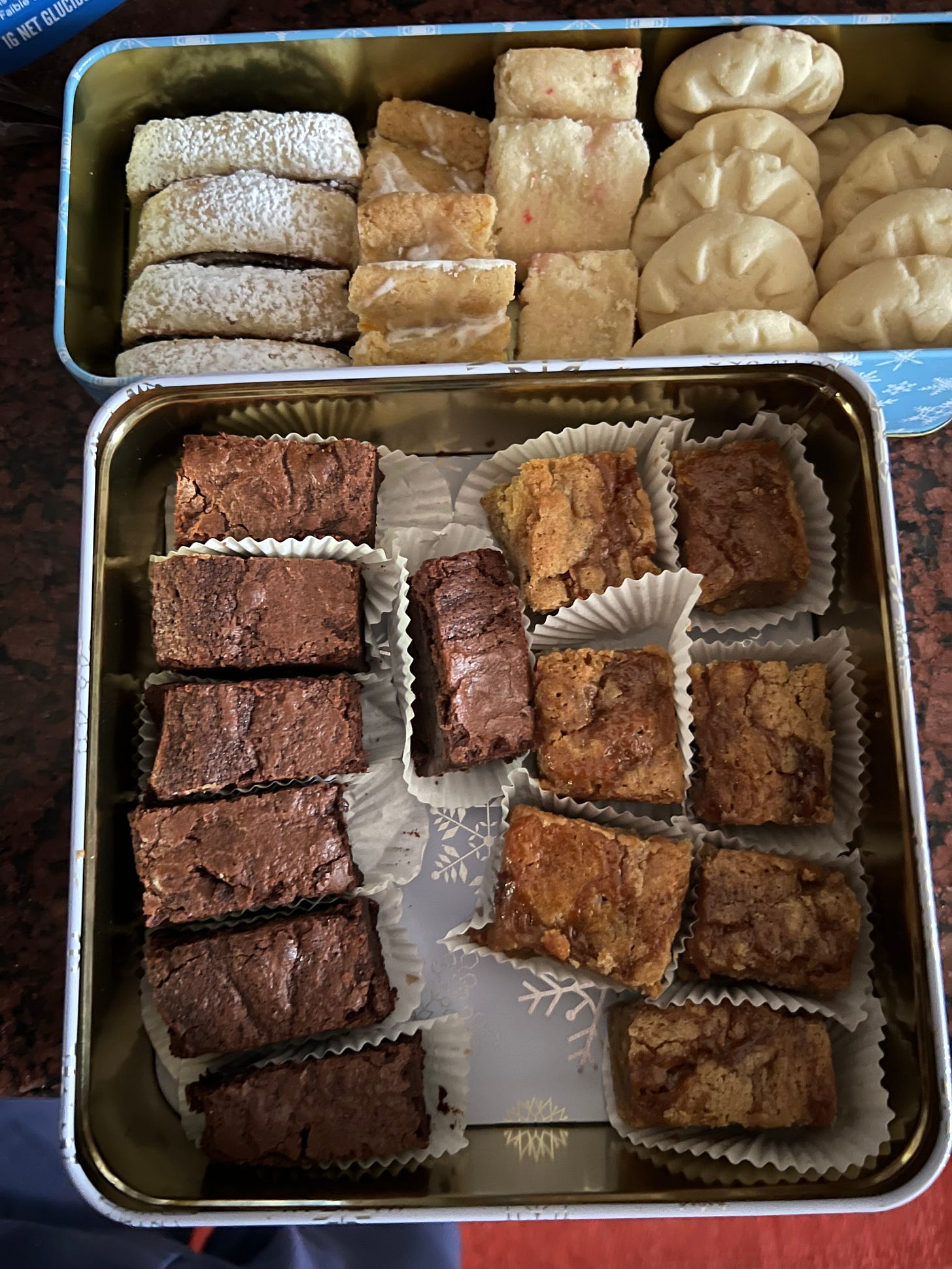
I feel like I am happiest and most present when I am in the kitchen. Not only am I not constantly doom scrolling social media while I’m cooking, I’m usually fully present in the flow of doing. My focus is on the moment, not how we will pack up all our dishes or what’s going to happen in Israel. Cooking engages all of my senses, so the amount of data coming in is large, and the central processing unit, that is my brain, works almost at a subconscious level making decisions about what to pay attention to, how to adjust, what I have in the fridge I might be able to use up, what to do next. For me, it is a very rewarding exercise on many levels, especially, but not solely, if something delicious results.
I haven’t been cooking as much as I usually do because we have been on the road for several weeks. Although we’ve eaten very well, I feel out of balance for not having participated in the production of our food. And with more travel and our move to New Hampshire coming up, I’m not going to have much time in the kitchen over the next couple of months, either. During these periods, when I get a chance to make something, however small—scramble some eggs, season some vegetables—it’s like a little jolt of reassurance that things are alright.
Last night, along with several racks of barbecued ribs, Leslie was making a pile of roasted sweet potato wedges for dinner. I roast sweet potato wedges often because they are easy, fast, pretty, and delicious. You don’t even have to peel them. Leslie asked me to season hers and it turns out we pretty much do them exactly the same way. (As I’m sure many people do.) Although salt and pepper is all you need, sometimes I add za’atar for a more complex flavor. So does she.
Just about the only word of advice you need about roasting sweet potato wedges is to make sure you are not crowding the pan. The wedges need some space between them so they roast, brown, and crisp, rather than steam and soften. For a small amount, a cast-iron pan is best, as it holds the heat and browns the cut side of the wedges nicely. But for a larger batch, use a sheet pan—no parchment liner. Flip the wedges halfway through to even out the browning. If using za’atar, add it during the last five minutes, so the heat brings out the flavor without burning. Figure one small sweet potato or so per person. A large one will feed three. It may look like you have too much, but the wedges shrink when they cook and you’ll be surprised how many people can eat. Add some more for good measure.
I realize this is not the sort of dish you need a recipe for. And you’ll see that I don’t give you specific quantities because you can make as many or as few as you need. But to my earlier point, the more you get in the habit of just doing, the more benefit—beyond nutrition and nourishment—you will gain from your cooking.
All the best for a new year full of deliciousness and happiness contingent on nothing but the satisfaction you gain from being present in each moment.
RECIPE: Roasted Sweet Potato Wedges with Za’atar
(Makes as many as you need)
As many sweet potatoes as you need, say, 1 small one per person, or a medium sweet potato for every two
Extra-virgin olive oil
Salt
Freshly ground pepper
Za’atar seasoning (optional)
Preheat the oven to 425°F.
Cut the potatoes into wedges. Depending on the size and shape of your potatoes, this can require some creative geometry. Generally, I like to split small potatoes in half and larger potatoes in quarters. Then I cut each piece into a wedges, slicing from the center outward, leaving some skin on the base of each wedge, if possible. But don’t get too caught up in that. Fatter potatoes pose a challenge, so just cut the center flesh into wedge-like shapes. The point is to have a nice some nice sharp edges and planes on each piece that will brown and crisp nicely. They shouldn’t be too thick.
Spread out the wedges in a large cast-iron pan or on a sheet pan. Drizzle with olive oil, a little or a lot depending on your calorie consciousness. Season generously with salt and freshly ground black pepper. Using tongs or your hands (my preference), toss the wedges to coat evenly with the oil and seasonings, and then spread them out again so they have room to roast.
Place in the preheated oven for about 20 minutes until the sides flat on the pan brown. Keep them a little longer if they are just beginning to color. If you are meticulous, you can use tongs to flip each wedge. If you are not, use a spatula to flip the whole lot and keep roasting for another 20 minutes or so until nicely browned. If they aren’t, keep them in longer. You can turn up the heat to 450°F., too. As long as they don’t burn, you can’t really overcook them.
If using za’atar, sprinkle a tablespoon or more of za’atar around the pan, depending on how many potatoes you are roasting, and toss to coat. Roast another five minutes, then remove from the oven and serve while warm. Do not cover the roasted sweet potatoes to keep them warm or they will soften—still good, but they’ll loose their pleasant crunch.
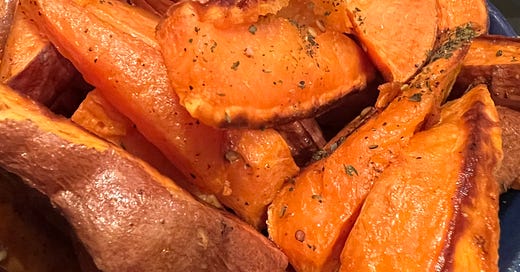


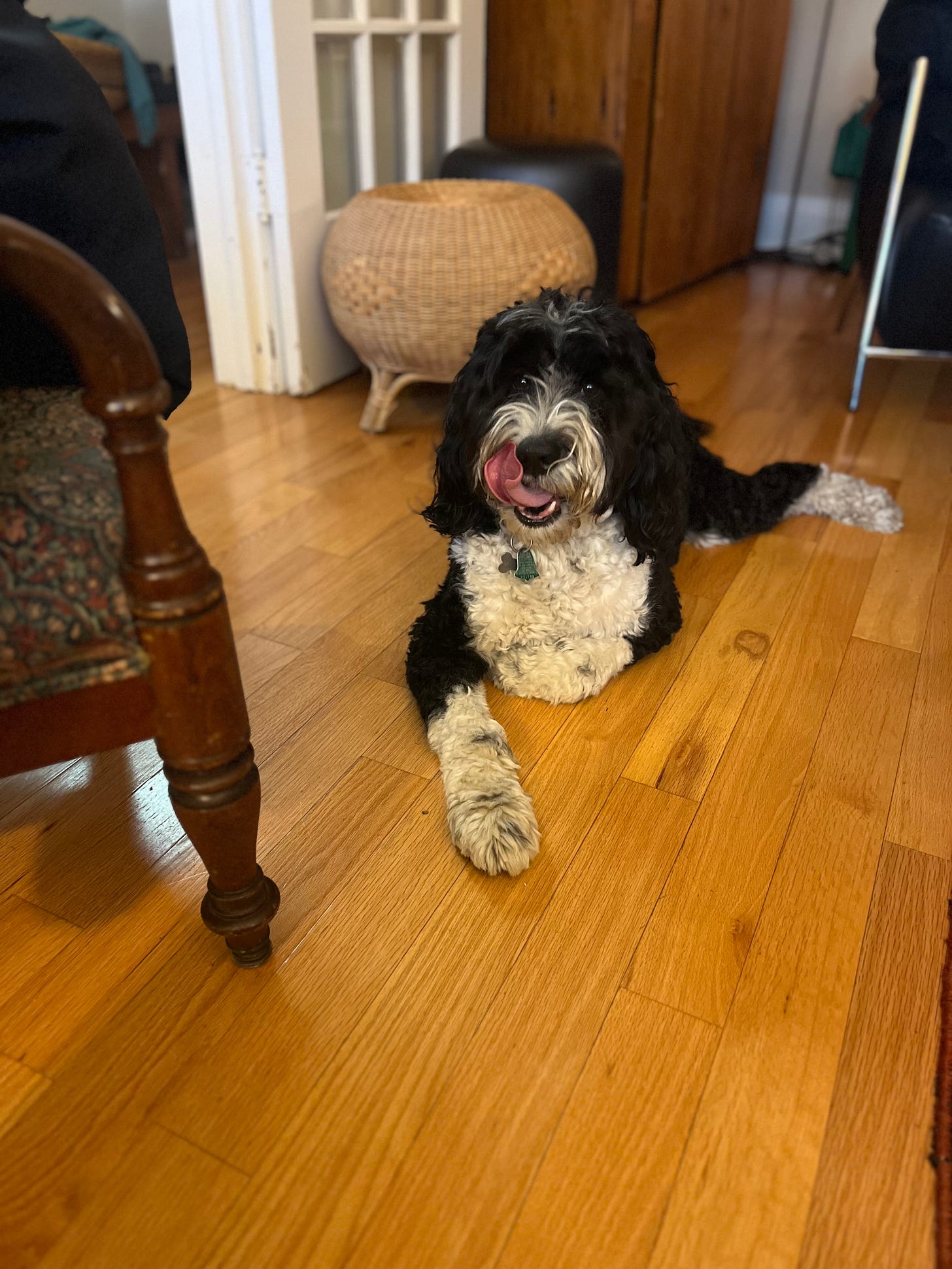

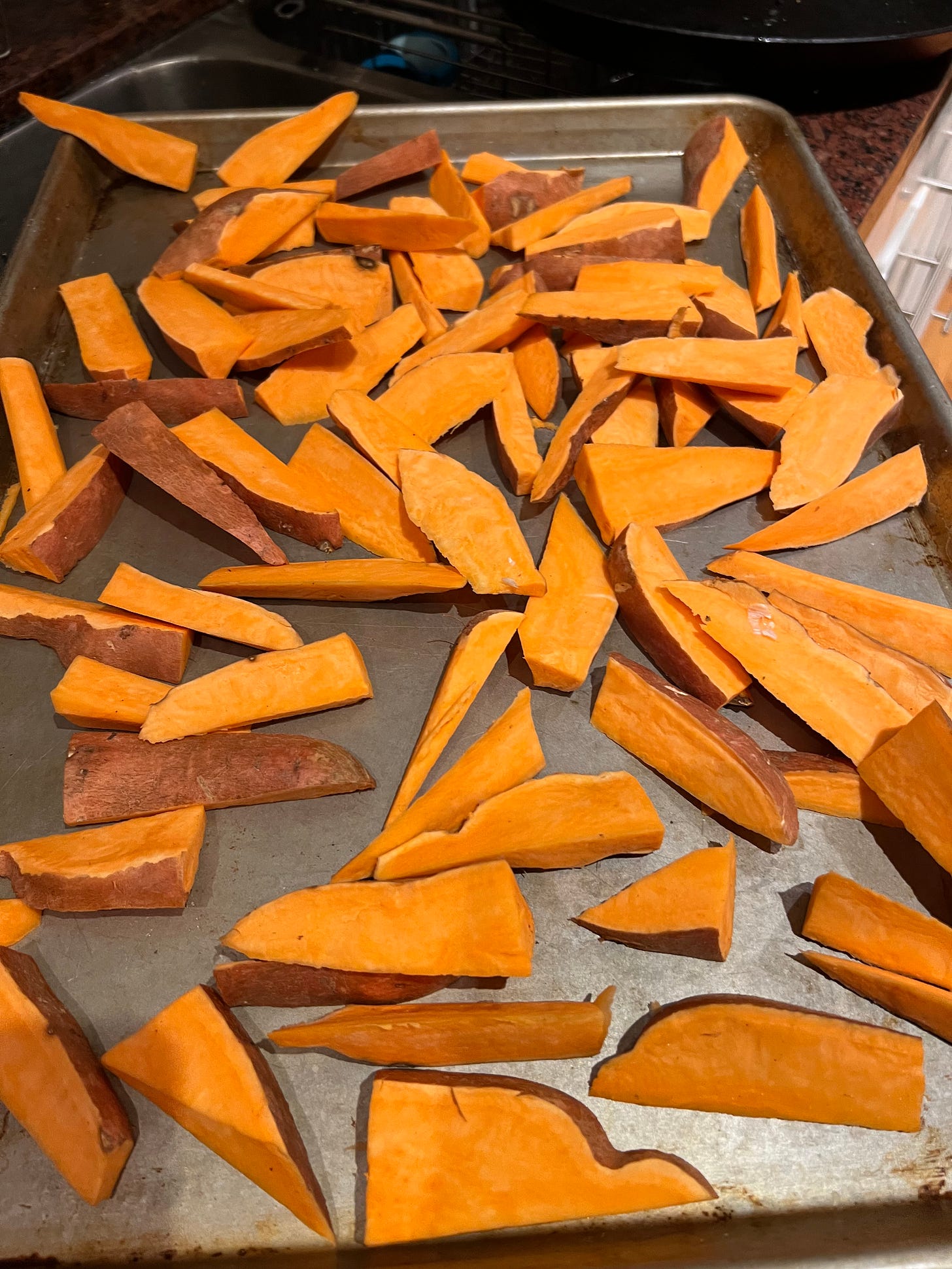
And a happy new year to you all! Great photos, message, recipe ... gives a lift to a rainy day in NY.
Cheers ... Marcia & Jack